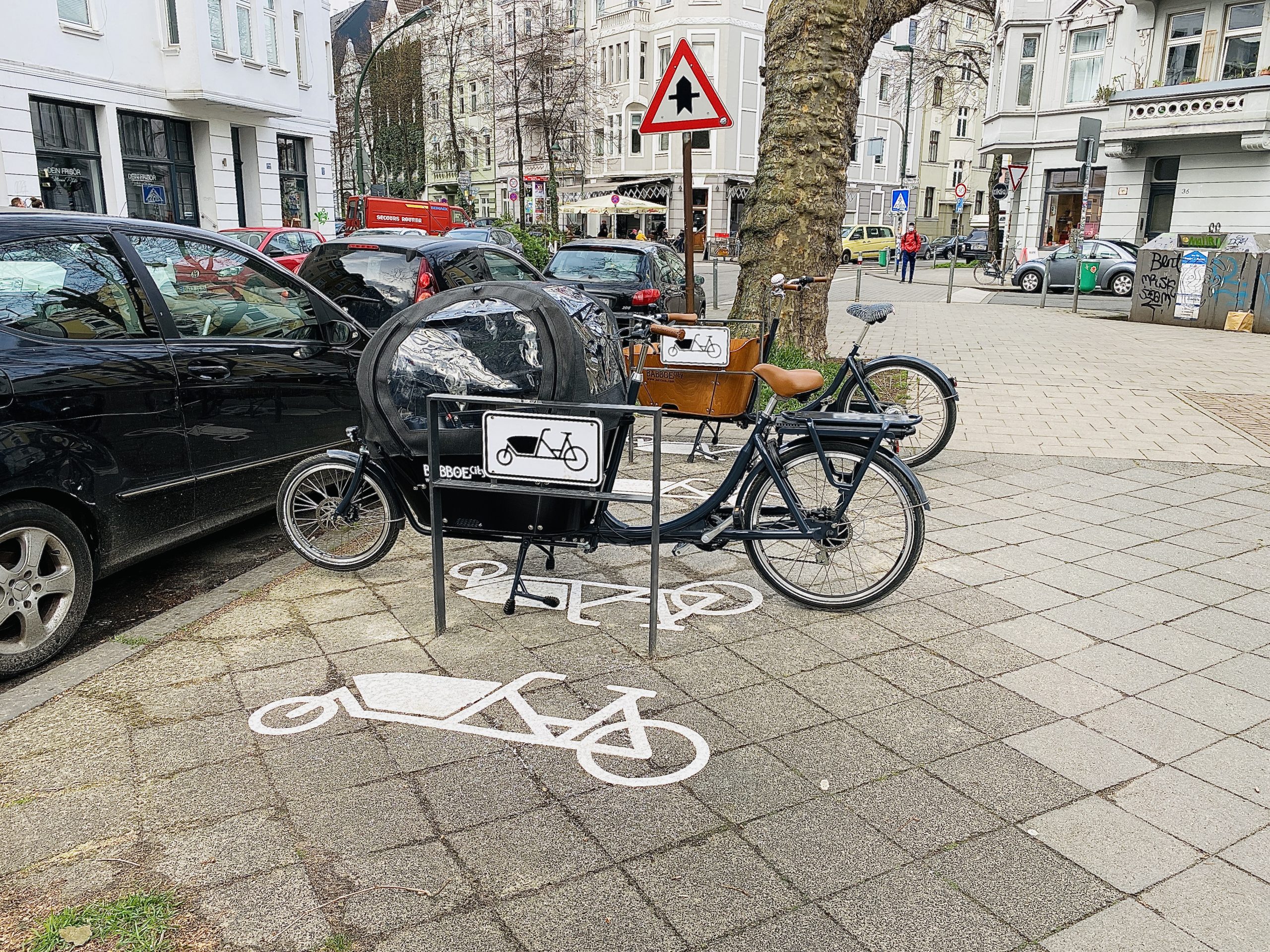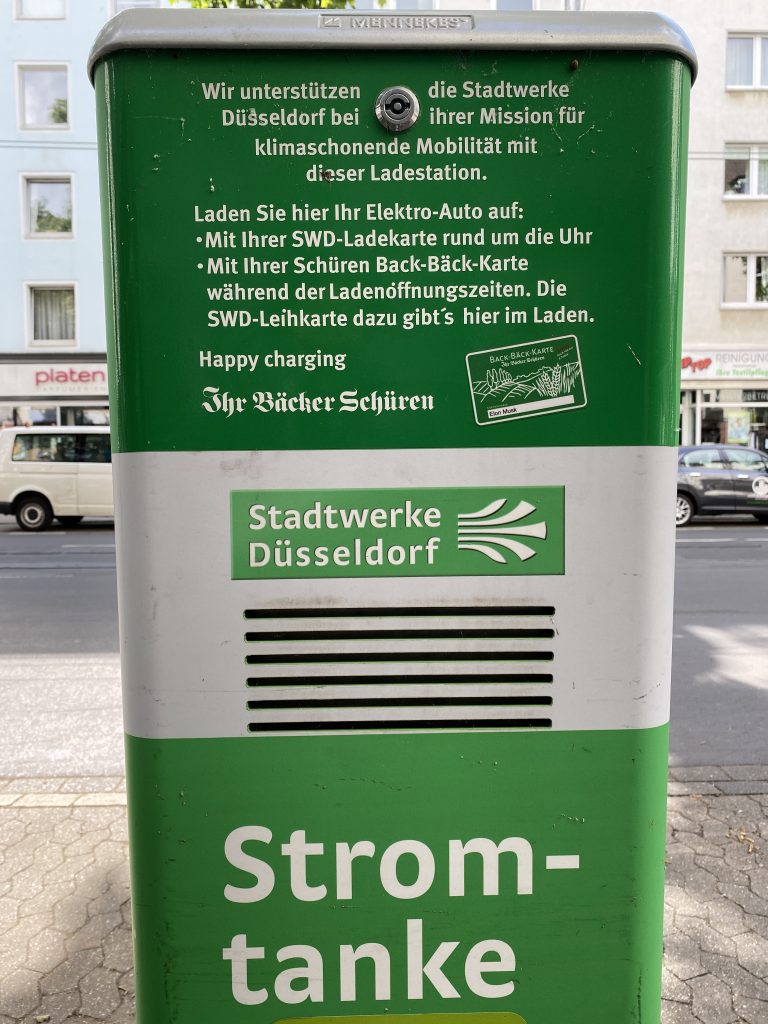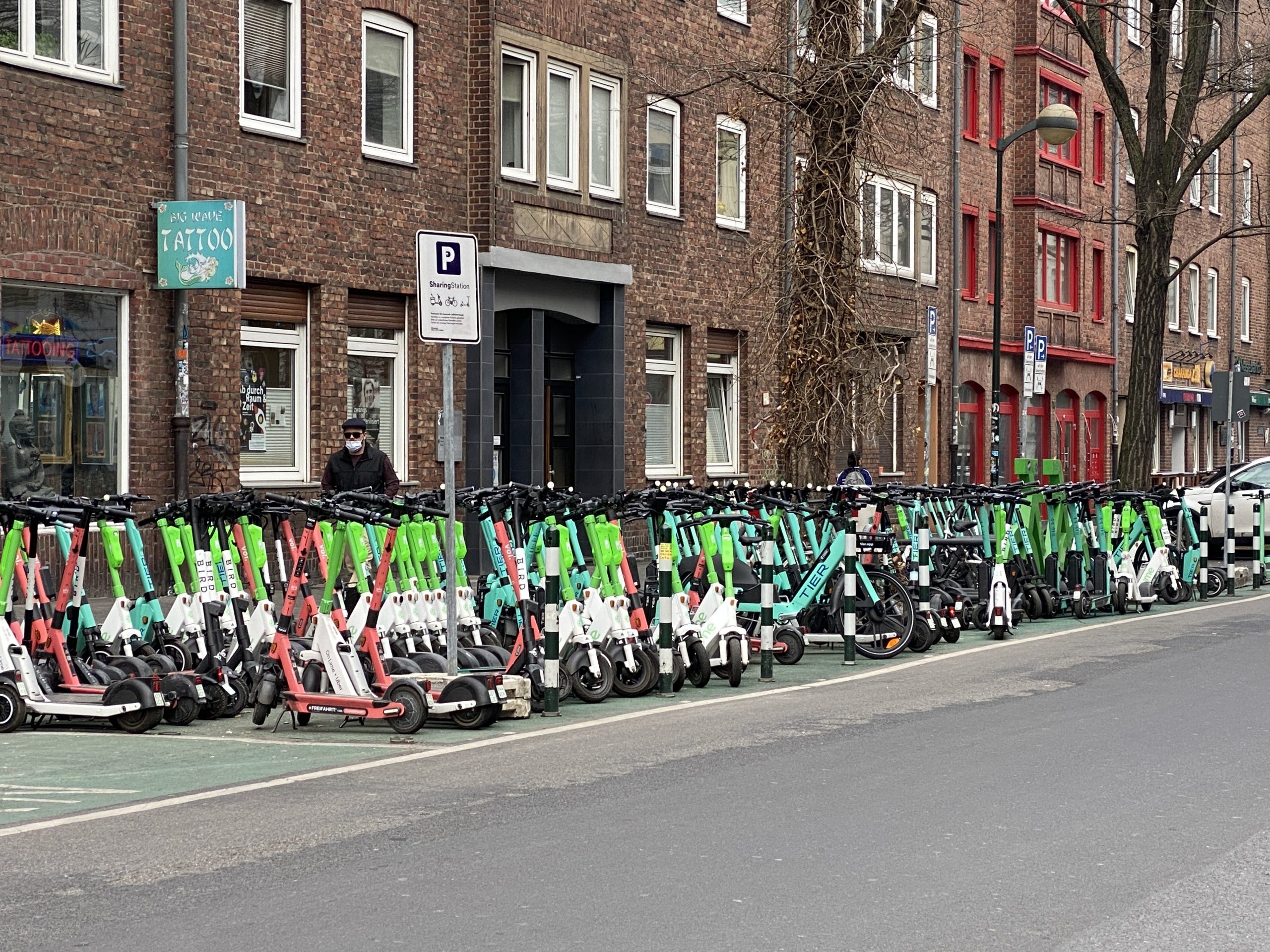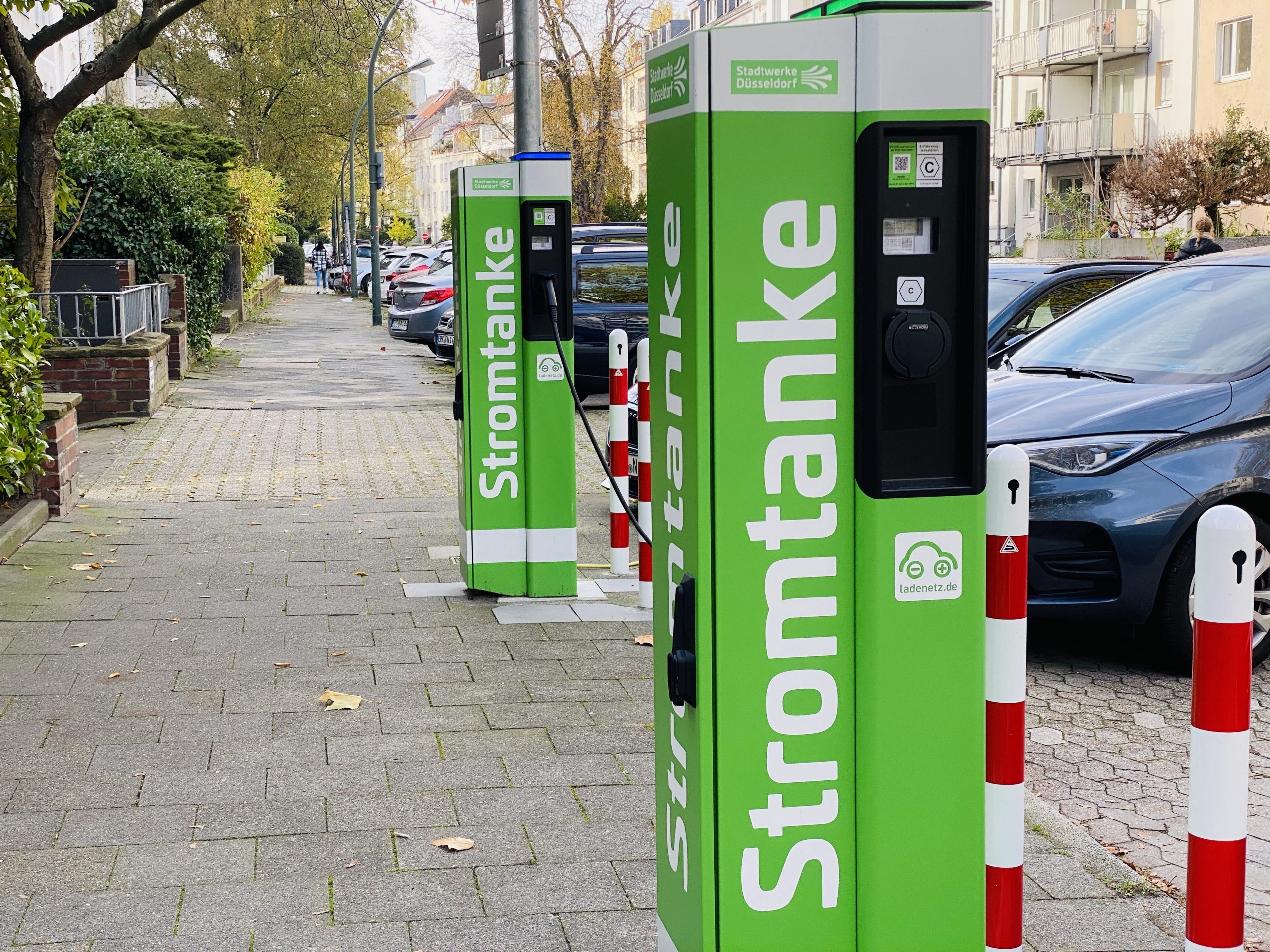Lots is being written on the role of transport in light of the climate crisis in the world’s media today. As we all know: burning fossil fuels produces carbon that contributes to the warming of our planet. Electric drives are more environmentally sustainable alternatives in their consumption and have, therefore, been increasingly integrated into our lives for many years. It begs the question of how e-mobility is already shaping urban space today.

My – admittedly highly subjective – research commences in a café in Düsseldorf’s trendy Flingern district on a sunny weekend. It takes no time at all for any number of electrically powered means of transport have passed me by. Most of them are cargo bikes, e-scooters and, of course, cars marked by e-plates. Hoping that they might sustainably replace combustion cars in urban traffic sounds almost too good to be true. however.
Let's have a look at e-cars
Measured by the number of its available charging stations and the average electricity price, the state capital of NRW is one of the top-3 major cities for owners of electric vehicles. The other two are Hamburg and Munich. Together with its electricity charging card, Stadtwerke Düsseldorf promotes low-cost, accessible, and cashless charging at 25,000 electric charging stations across Germany at this point. Some of them have funny designs, too, like the one at this.

That seems to solve the long-standing chicken-and-egg question of not buying any e-cars due to the lack of availability of charging stations, which in turn prevents the provision of more charging points due to lack of demand.
Not only having a look around in Flingern but also paying attention to people talking in the café may tell you that potential buyers of e-mobility vehicles are also deterred by the high purchase costs. Costs are saved in refuelling, as a fully charged battery can easily save €50 and more in comparison with a full tank for a combustion engine. However, that ratio might change in the near future as energy prices are rising.
Returning to the two-wheeled electric vehicles in our city, it should be mentioned that not only private e-vehicles are making their mark on the streets. Electronic sharing offers also abound. They see varying degree of use. They are also blocking the sidewalks to varying degrees.
After a veritable plague of e-bikes and e-scooters swamping many a city, the latter have become by far the most frequently shared means of transport of this kind. The scooters are whizzing through the streets with riders of all ages, in leisure or business attire, and apparently having plenty of fun at it, too.

Company vehicle fleets have changed in particular in urban delivery and shipping. First and foremost among these are the logistics companies. Deutsche Post DHL, for example, already maintains Germany’s largest electric fleet in Germany with its in-house developed electric vehicles and about 12,000 e-bikes and e-trikes. Amazon, Lieferando, and others also rely on electric drives in the city, which offer great savings potentials in comparison to combustion engines when stuck in stop-and-go mode.
On top of all of this, let us not forget that they make the air a little cleaner in urban areas, too. Who could object to that? Taking things another step, many streets such as the Kö could be made entirely car-free, following the examples of Berlin or Paris and virtually developing a promenade with cafés and other leisure facilities.
“Electrically powered means of transport are going to increasingly dominate our streetscape in the near future. It’s a good thing, too! After all, we’re all #TeamBetterAir, aren’t we? Solutions for the early issues such as a lack of fuelling infrastructure are underway. Our future is shaping up to be shared and electric now. We are excited to see how it develops.”





